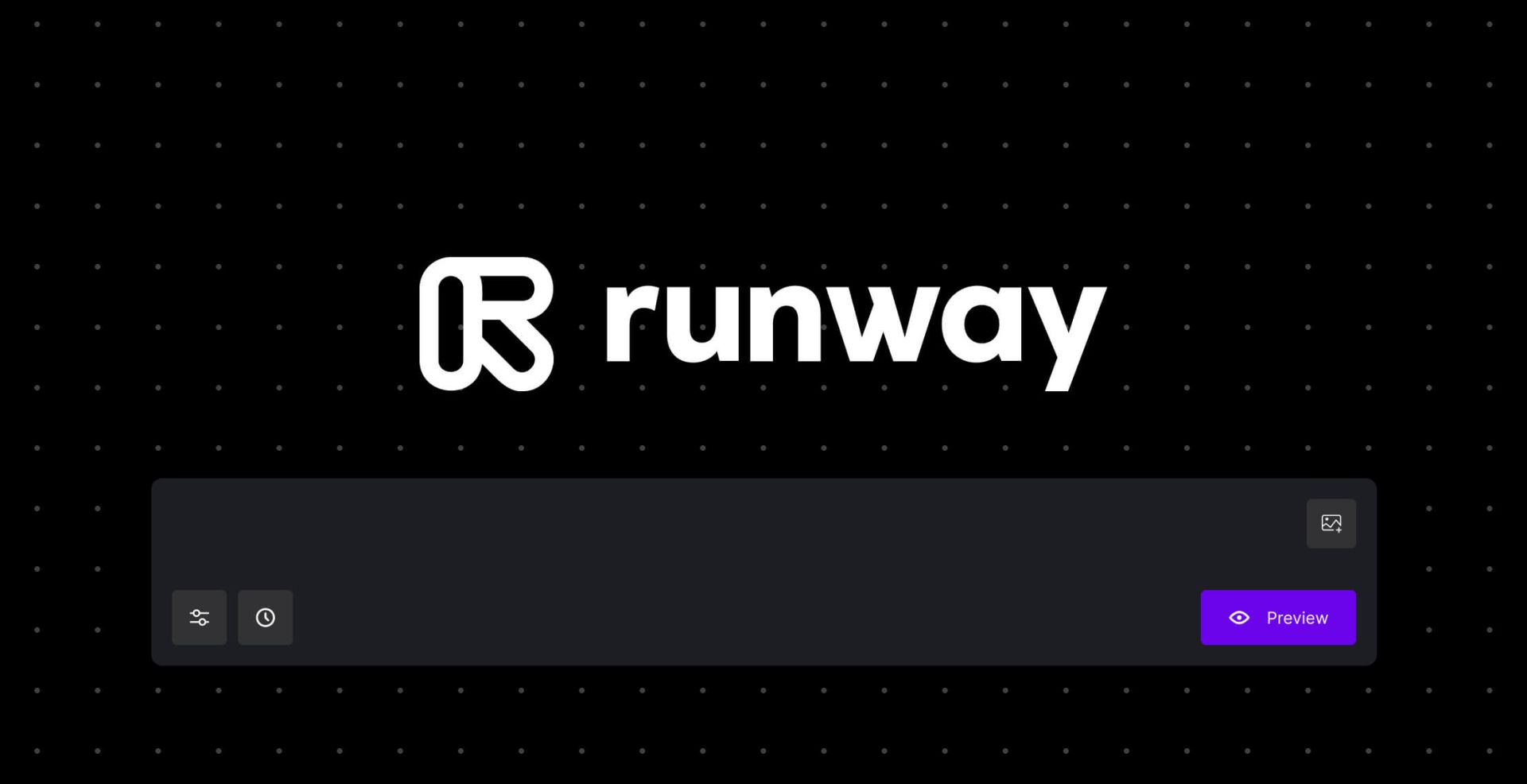
Veo 3 brings Runway ML style AI right into your editing suite, but that can leave creators asking how to balance speed, price, and creative control when using generative video and machine learning models. From text to video and style transfer to motion tracking and simple green screen removal, this article lays out practical choices and compares the best alternatives for Runway ML in AI video generation & editing. Which tools let you move faster, keep quality high, and fit your workflow and budget?
If you want a clear starting point, DomoAI's AI video editor gives fast cloud editing, innovative scene suggestions, and easy trimming so you can test alternatives quickly and keep projects on schedule.

Runway ML offers powerful capabilities for model training, fine-tuning, ControlNet workflows, and inpainting. These go beyond simple point-and-click use. You’ll need to grasp data preparation, prompt engineering, model checkpoints, GPU allocation, and the trade-offs between transfer learning and off-the-shelf models.
For many students and newcomers, challenges arise when tuning a generative AI model or running long text-to-video jobs, especially when managing compute credits and batch sizes. While the platform provides documentation and a models library, true proficiency still takes time and hands-on experimentation. Which features will you customize, and which will you use as ready-made?
Runway ML’s free tier lets you experiment, but it gates high-resolution exports, priority GPU access, some state-of-the-art models, and advanced collaboration features. Video synthesis jobs and long renders consume compute credits fast.
Teams and educators report hitting caps quickly when exporting full-length clips, using background removal and motion tracking, or accessing premium models like those based on Stable Diffusion variants. For people who need predictable, low-cost testing or extensive classroom use, more generous free plans or open source setups can feel more practical. How many credits will your typical project burn?
Some users find the mix of node-based model chaining and a timeline-focused video editor jarring. Experienced video editors who prefer simple drag-and-drop timelines and predictable export workflows may struggle with model pipelines, masking tools, and live preview behavior that differ from tools like Filmora or Premiere.
Onboarding can leave people guessing where to place a mask, how to set up green screen removal, or how to combine motion tracking with inpainting. Collaboration features and real-time previews have improved, but the mental model still feels technical to those who want a purely visual, fast editing flow. Do you think in timelines or modular model blocks?
Pricing for cloud rendering, GPU time, and advanced models can add up. Runway ML uses subscription tiers plus compute credits for heavy GPU work. For hobbyists, small studios, and educators, the cost unpredictability becomes a hard sell when projects scale to long videos or many iterations.
Alternatives include lower-cost commercial services, pay-as-you-go providers, or self-hosting open source models to avoid recurring fees. Teams weighing monthly subscription versus usage-based billing often pick the option that fits their expected render load and export needs. Do you need a predictable monthly plan or flexible usage billing?

Ease of use and learning curve: pick an interface that keeps you making work fast
Look for a clear, visual workspace with drag and drop editing, live previews, and template presets so you can test ideas without reading docs for hours. Does the platform offer guided prompts, keyword highlighting for prompting, and one-click undo so a mistake does not derail a session?
Check whether advanced features are accessible through menus or as simple toggles, and whether there are beginner mode and power user modes for scaling your workflow.
Inventory the capabilities you need:
Is the platform running diffusion models, gen two style text to video, or Stable Diffusion checkpoints you already trust? Also, confirm whether a model marketplace, presets, plugins, or an API lets you expand features without rewriting your pipeline.
Compare free tiers, pay-as-you-go credits, monthly subscriptions, and enterprise contracts side by side. Watch out for hidden costs like cloud GPU minutes, download bandwidth, watermark removal fees, and per-frame rendering surcharges; does the vendor offer educational or team discounts?
Which billing model suits irregular workloads versus steady production needs, and can you switch plans without losing assets or models?
Test latency for short edits and full renders, check GPU acceleration and cloud rendering options, and compare final files for resolution, frame stability, and artifacting.
Run the same prompt or timeline through each tool and inspect:
How quickly can you produce a usable draft, and how much extra time or cost is required to reach final quality?
Look for team workspaces, role-based permissions, real-time collaboration, version history, and cloud asset management that syncs with tools like:
Confirm export formats, codecs, and options for alpha channel or transparent background exports; can you get ProRes or lossless files without extra charges or watermarks? Can your editor export captions, SRT files, or frame-accurate MP4s for post-production workflows?
Evaluate documentation depth, step-by-step tutorials, prompt libraries, template collections, active community forums, and live support SLAs for urgent issues. Is there SDK or API documentation and sample code for automation or integration with your backend systems?
If something breaks in the middle of a render, can you reach an engineer or a community expert right away?
Creating cool videos used to mean hours of editing and lots of technical know-how, but DomoAI's AI video editor changes that completely. You can turn photos into moving clips, make videos look like anime, or create talking avatars just by typing what you want.
Create your first video for free with DomoAI today!

DomoAI gives creators a simple path to build short videos without long editing sessions or deep technical skills. The platform converts still photos into animated clips, applies anime-style effects, and generates talking avatars from plain text prompts.
It emphasizes accessibility over advanced control, so the AI handles motion, timing, and basic compositing while you focus on ideas. Creators targeting social formats like TikTok or Instagram can produce content in minutes and test the service with a free initial video.
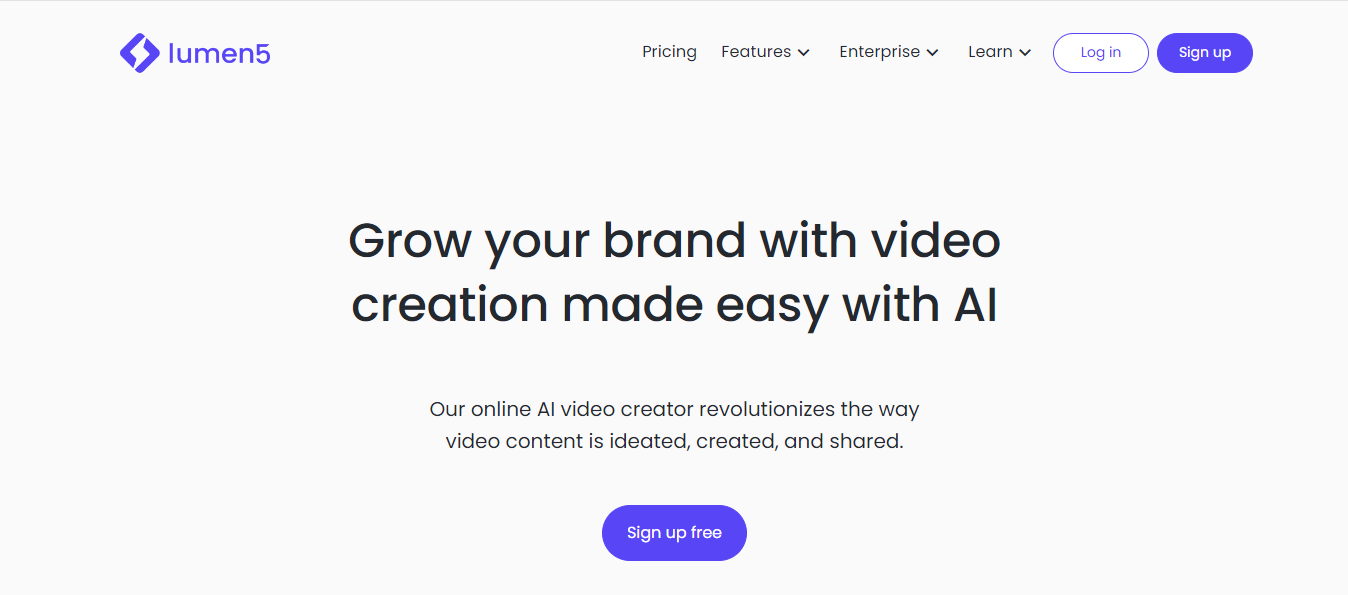
Lumen5 targets small businesses and content teams that need to repurpose long-form text into short videos without specialized skills. It extracts key points from blog posts or RSS feeds and builds a storyboard with editable scenes, stock media, and AI voiceover options.
The drag-and-drop editor and brand kit support help you maintain consistent fonts, colors, and logos across multiple workspaces. This suits solopreneurs and marketing teams who need quick, templated video production rather than deep generative model control.

Synthesia converts text scripts into finished videos using an extensive library of AI presenters and natural-sounding voices across many languages. You can customize backgrounds, brand colors, and simple animations to match corporate identity.
Collaboration tools let teams review drafts in the platform and publish via shareable links or download assets. Use cases include training, sales, onboarding, and marketing, where consistent presenter style and multilingual delivery matter.

Descript changes the workflow by linking text editing to video editing. Upload media or record directly, get an automatic transcript, then cut, move, or remove words to change the video. The tool offers high-accuracy transcription, AI voice cloning for voiceovers, and a green-screen feature that detects and replaces backgrounds.
Descript also includes tools for removing filler words and correcting gaze with an Eye Contact feature, which helps recorded presenters look more natural.
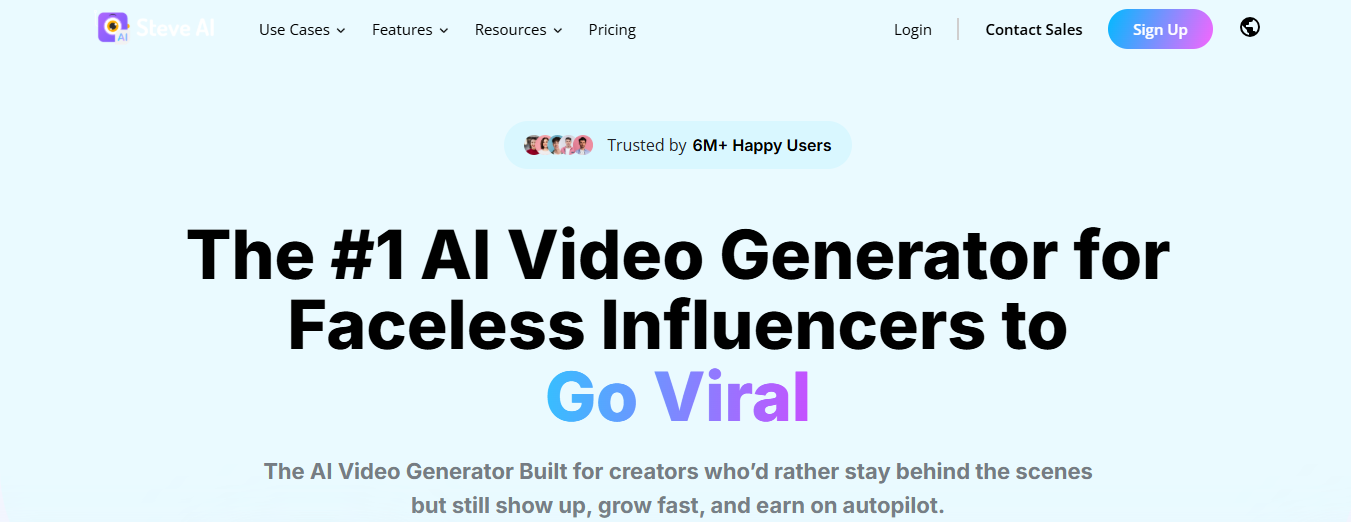
Steve.ai provides both animated and live video workflows with a library of stock footage, characters, and audio. It auto-generates scripts to speed production and offers scene controls for:
The platform includes an animated newscaster and a range of AI characters across ages, ethnicities, and professions, which helps teams produce inclusive content for:
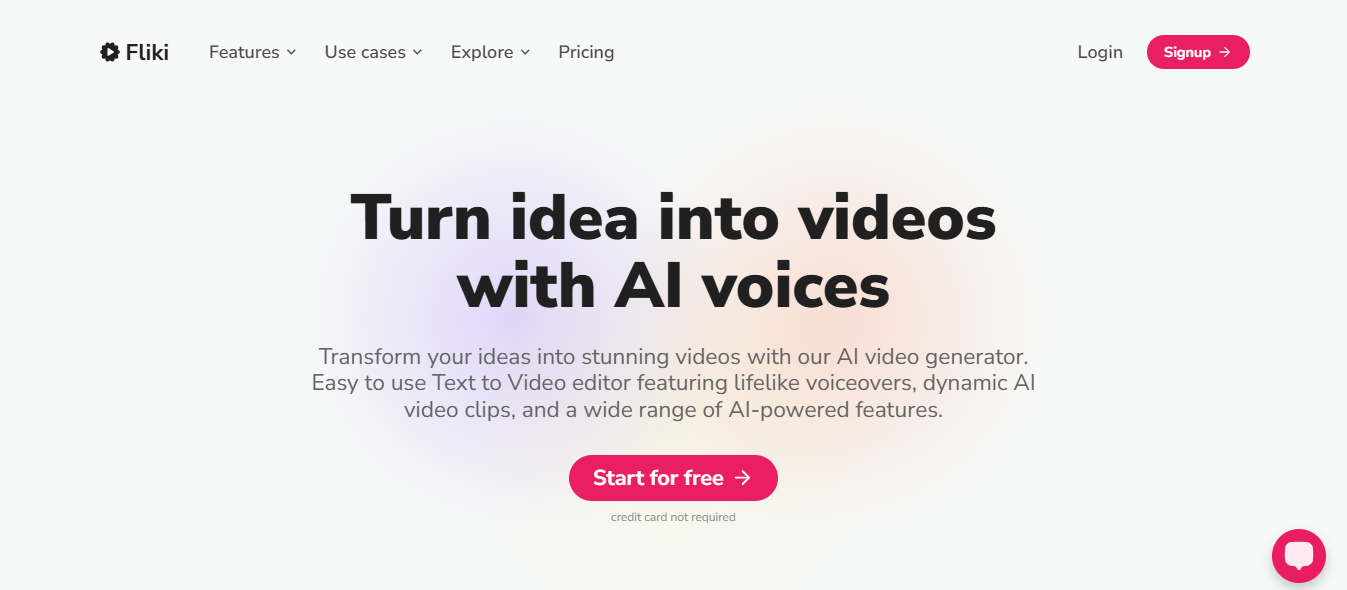
Fliki focuses on turning text into audio and video with natural timing and emotion. It offers more than 1,000 voices in 75 languages and supports voice cloning so you can use your voice in generated content.
The free plan includes five minutes per month and access to an integrated stock library. Users repurpose tweets, blogs, and presentations into videos and audiobooks using simple prompts and templates.
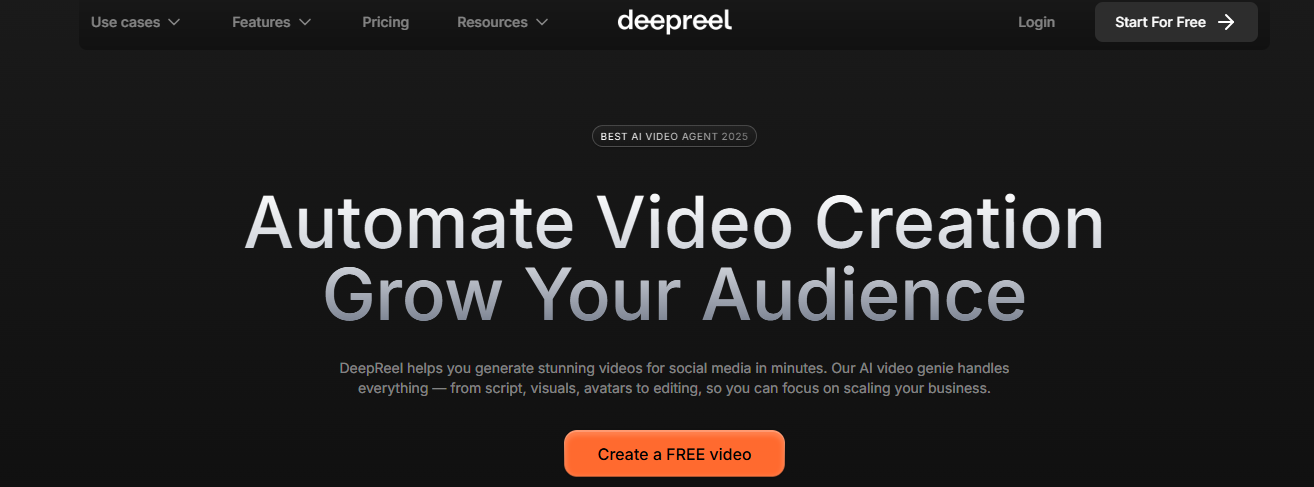
DeepReel lets you generate video messages where an avatar speaks your script in your voice across more than 30 languages. It is built for personalized outreach and automated campaigns so that teams can send tailored:
DeepReel integrates with Canva for importing media and tracks campaign performance to measure engagement.
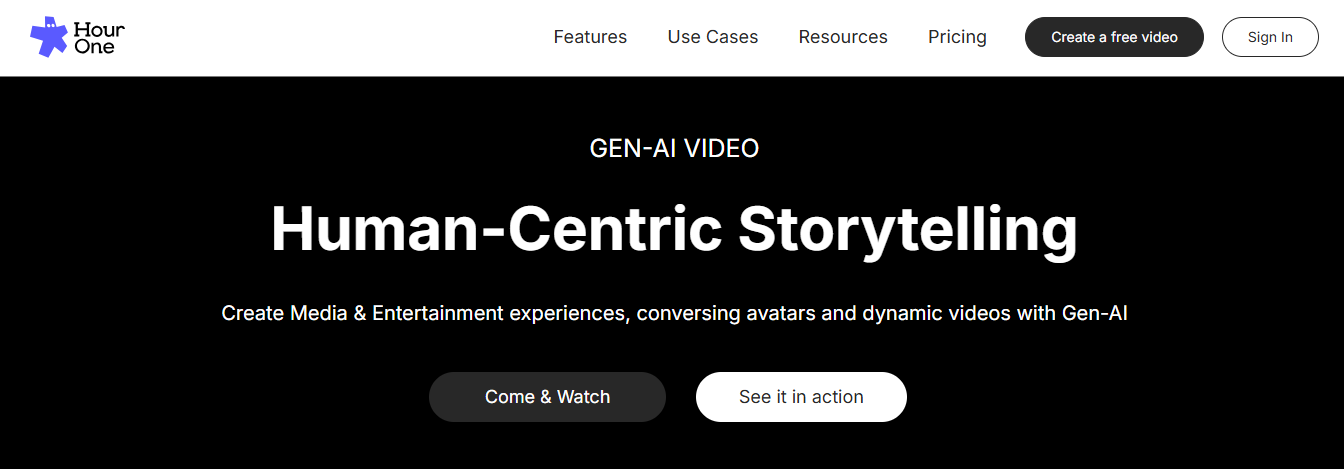
Hour One streamlines text to video with a script-first editor and a catalog of realistic avatars. The platform supports over 100 languages and about 200 voices, and it offers 2D and 3D templates.
The product includes an AI Wizard powered by conversational models to help generate scripts and translations at scale. Its self-service tool Reals simplifies production for teams that need consistent narrator-driven content.
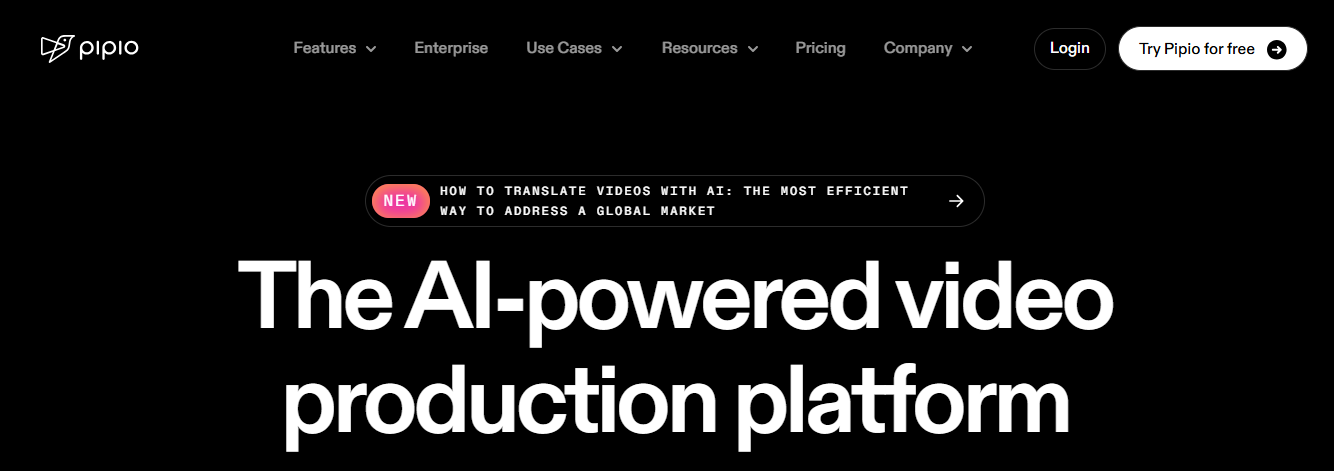
Pipio makes a professional video from a typed script using drag-and-drop scene building. The platform offers over 100 virtual spokespeople you can customize and deploy in more than 40 languages and accents. It targets marketers, trainers, and entrepreneurs who need a quick way to generate spokesperson-style videos with adjustable voice and appearance.

Veed targets creators who need fast social clips and polished captions. The editor uses a timeline with drag-and-drop controls, automatic transcription and subtitling, and built-in tools like a teleprompter and screen recorder.
It also offers an AI script generator, text-to-speech with custom avatars, and access to royalty-free stock media. These features make it easy to create short marketing videos, tutorials, and social posts with consistent styling.

AI has transformed video production from a high-cost, specialist task into something scalable and accessible for everyday brand storytelling. For digital-first brands, this shift means video is no longer an occasional campaign asset, it’s an ongoing language for engaging audiences, with over 3.48 billion people watching digital video worldwide.
To get the most out of AI video creation, consider these best practices:
Define whether you need a product demo, social short, training module, explainer, or content repurposed from text. Match that choice to an AI workflow early. For example, choose text-to-video or Runway Gen 2 for concepting, or pick an AI editing pipeline for long-form to short-form cuts.
Decide target KPIs up front:
That choice steers model selection, asset needs, and whether you will use machine learning models for automated trimming, motion tracking, or text generation. Which metric will you measure first?
Leverage AI for repetitive, high-volume work: automatic trimming, captioning, object removal, inpainting, and reformatting across aspect ratios. Use synthetic media tools to create avatars or text-to-voice when you cannot shoot.
Yet requires human oversight for narrative arc, emotional tone, and brand voice. Machine learning models speed production, but they do not replace editorial judgment. Who will own the final sign-off on the story and tone?
Choose features to solve specific production problems. Use subtitles and automated translation to grow reach. Use object removal, motion tracking, and inpainting to fix shots without reshoots. Use avatars, voice cloning, or generated footage for personalization without new filming.
Use content summarisation and video synthesis to create snackable clips from long-form interviews. Tie those features into collaboration tools and cloud rendering to keep teams productive across remote workflows. Which feature will remove the most significant bottleneck on your next project?
Maintain tight creative direction on script, visual language, pacing, and audio mix. Avoid default templates that flatten brand personality. Create and curate brand assets, train custom models when needed, and lock down style guides for:
Use version control and review sequences so editors can iterate without losing creative intent. Human editors should sculpt what AI generates and apply selective manual corrections using tools like object removal and frame-level inpainting. Who will maintain the style guide and approve model training?
Adjust length, aspect ratio, and pacing for each destination. Short form needs faster hooks; long form rewards more transparent structure and chaptering. Use AI auto-reframing and smart crop, but always check essential visual elements to ensure faces or product shots are not cut off.
Prepare thumbnails, closed captioning, and metadata for search and discovery. Use adaptive bitrate and cloud rendering to ensure smooth playback across devices. Which format will you prioritize for launch?
Add captions and readable text overlays to improve comprehension and accessibility. Produce multilingual voiceovers and translated captions to expand reach quickly using automated translation and text-to-speech tools. Follow accessibility standards such as caption accuracy, readable contrast, and audio description tracks for visually impaired viewers.
Implement ethical safeguards for voice cloning and synthetic actors, including consent, watermarking, and clear disclosures when needed. How will you document consent and accessibility compliance?
Preview AI-generated segments before publishing and run A/B tests across variants to learn what works. Capture analytics on watch time, drop off, rewatch rates, and conversions, and feed those metrics back into edit choices. Build a fast feedback loop so you can retrain models, adjust scripts, or replace synthetic assets when performance trends fall.
Add quality checks for potential artifacts, generative hallucinations, or misuse of synthetic media and flag content for legal review when necessary. What small experiment will you run next to improve metrics?
DomoAI removes the heavy lifting that used to slow creators down. You drop in photos or short clips, type a few directions, and the system runs generative AI to create moving footage, anime-style conversions, or talking avatars.
The aim is precise: let people focus on ideas and voice while the machine learning handles frame generation, motion synthesis, and automated color work. Want to try something for social? The tool gives fast outputs that you can tweak without deep editing skills.
DomoAI uses neural networks and pretrained models drawn from the same techniques you see in modern generative AI. Diffusion models and GAN-style methods generate new frames from images and text prompts. The system maps inputs into latent space, applies style transfer and temporal consistency checks, and produces smooth motion using frame interpolation and motion tracking.
Object detection and mask-based editing let you isolate faces or backgrounds for talking avatar rigs or green screen swaps. Those are standard building blocks also found in tools like Runway ML.
Photo to video conversion that adds believable parallax and motion. Anime-style conversion that applies a consistent artistic filter across frames. Talking avatar generation that syncs lips to audio with emotion controls.
Automated color grading, background removal, and easy motion tracking. Templates and presets speed common workflows, while advanced controls let you use keyframe animation and mask-based fixes when you need precision. Which feature would speed up your next post?
Both systems lean on machine learning, model zoos, and cloud-based rendering with GPU acceleration. Runway ML emphasizes an extensible model catalog, APIs, and collaborative workflows that let small teams train or swap custom models. DomoAI focuses on turnkey flows for creators who want fewer knobs and faster outputs.
If you need deep model training or custom API integrations, look for tools that expose model training and exporting. If you want fast image-to-video, style transfer, and talking avatars with minimal setup, DomoAI fits that use case.
Start with upload: images, short clips, or a headshot. Choose a style or prompt, add audio or text, and let the model generate. Use mask-based tools to refine a face, adjust motion with keyframes, and pick export settings for:
Teams can iterate in the cloud and share drafts without installing heavy software. How would you reuse clips across platforms once you can scale outputs quickly?
Fast presets deliver quick, polished outputs. When you need precise motion or brand-specific color, use pretrained or custom models and fine-tune masks or keyframes. Temporal consistency checks reduce flicker, but extreme stylization can require more passes.
That balance between automation and manual control is common across generative video tools like those in the Runway ML family.
Cloud-based rendering and GPU acceleration speed exports but affect cost. Look for options to export in standard formats, API access for automation, and integrations with collaboration tools. Check whether a model zoo or pretrained models are available if you need custom looks. Storage and render queues matter when you scale to multiple videos per week.
Create your first video for free with DomoAI today!
• Pixverse AI
• Krea AI
• Midjourney AI
• Vidu AI
• Pika Labs Pricing